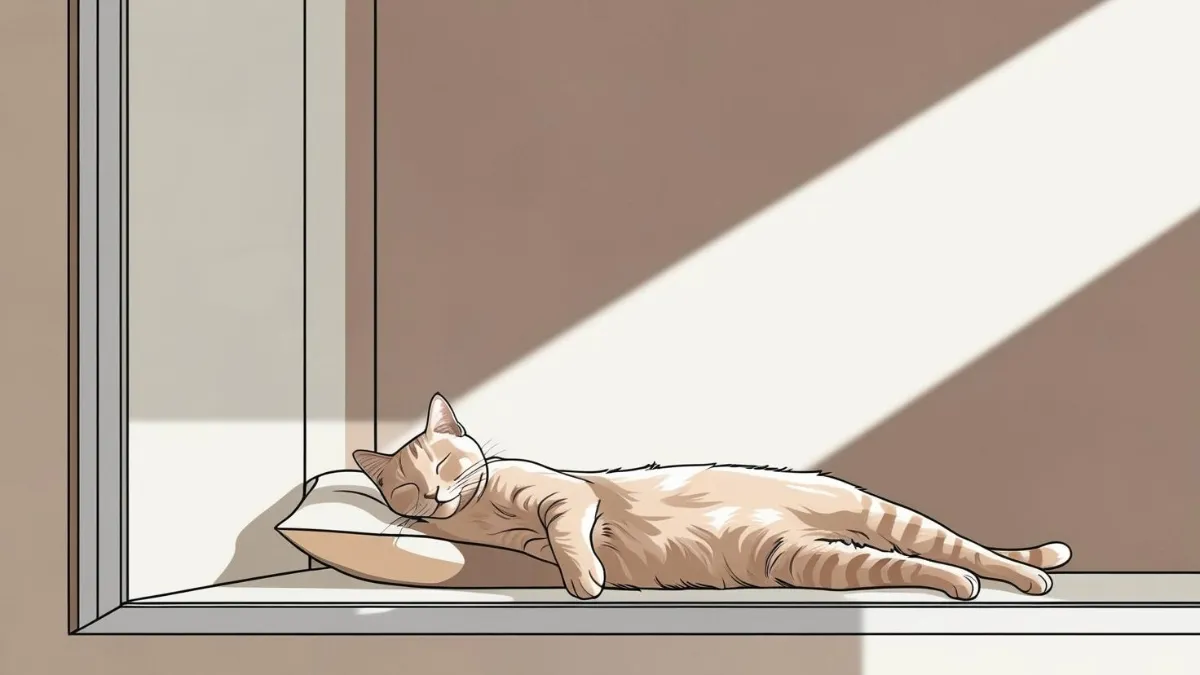We humans have a lot to learn from cats. From their effortless poise to their uncanny knack for living in the moment, cats might just be the philosophers we didn’t know we needed. In his book, Feline Philosophy: Cats and the Meaning of Life, philosopher John Gray unpacks the surprisingly deep lessons cats can teach us about happiness, contentment, and the art of just being. Can observing cats really make us happier? Let’s explore this idea together.
The Feline Approach to Life
If there’s one thing cats are pros at, it’s living life on their own terms. They don’t fret over past mistakes or obsess over future plans. They simply are. Their approach can be broken down into a few key ideas:
Living in the Present
Cats have mastered the art of mindfulness. When a cat naps in a sunbeam, it’s not worrying about the next meal or the neighbor’s dog. It’s fully present, soaking up the warmth and enjoying the now. Humans, on the other hand, are perpetually stuck in their heads, replaying yesterday’s blunders or plotting tomorrow’s moves. What if we learned to embrace the moment like our feline friends?
Acceptance
Remember that story in Gray’s book about the cat whose owner tried to make it vegetarian? The cat didn’t argue, protest, or feel wronged. It simply accepted the situation and went off to hunt mice. Cats don’t fight the current. They adapt and do what feels right to them. We humans, meanwhile, often get bogged down trying to control what we can’t. What if, instead, we embraced life as it comes—curveballs and all?
Detachment
Cats are the poster children for independence. They don’t need external validation. A cat doesn’t care if you think it’s cute, smart, or the best hunter in the neighborhood. It’s comfortable in its fur. This detachment from external opinions can be a powerful lesson. How often do we let others’ judgments dictate our happiness? If we took a cue from cats, we’d focus on what makes us happy, not what makes others approve of us.
By embracing these feline philosophies, we can begin to unshackle ourselves from the mental baggage that so often weighs us down.
The Myth of Human Happiness
Humans love to complicate things, especially happiness. We tell ourselves we’ll be happy when we get the promotion, when we lose 10 pounds, or when we find our soulmate. But cats don’t chase happiness. They simply exist, and their default state seems to be contentment.
The Restlessness of Being Human
According to Gray, humans are perpetually dissatisfied. We’re restless creatures, always searching for more: more meaning, more success, more everything. Unlike cats, who seem perfectly fine with who they are, humans are constantly trying to be someone or something else. This existential angst fuels our need for philosophies, religions, and self-help guides to give us answers that cats don’t even bother to ask.
The Stories We Tell Ourselves
One of Gray’s most striking points is how humans create narratives to make sense of their lives. We craft stories to explain why we’re here, why we suffer, and what our purpose is. These stories can give our lives meaning—but they can also make us miserable. When those narratives crumble, so does our happiness. Cats, by contrast, don’t burden themselves with stories. They don’t ruminate on past mistakes or fret about future tragedies. They’re free from the self-imposed drama that plagues us.
The Pursuit of Happiness
Here’s the kicker: the more we chase happiness, the more elusive it becomes. Gray argues that happiness isn’t something to pursue; it’s something to stumble upon while doing things we enjoy. Cats don’t have a concept of happiness. They just do what feels good in the moment—whether that’s chasing a feather toy or curling up for a nap. Maybe we’re overcomplicating things by making happiness a goal instead of a byproduct.
Learning from Our Feline Friends
Gray distills his observations of cats into ten tips for life. Here are three of my favorites:
1. Never Try to Convince People to Behave Rationally
Trying to get people to be rational is like trying to get a cat to stop chasing a laser pointer. It’s just not going to happen. Most humans, like cats, are driven by emotions, not logic. Instead of wasting energy on futile arguments, Gray suggests taking a cue from cats: if you’re not getting anywhere, just walk away. It’s not about giving up; it’s about knowing when to conserve your energy.
2. Don’t Seek Meaning in Suffering
Humans have a bad habit of glorifying suffering. We think that enduring hardship somehow makes us better or more deserving of happiness. Cats don’t buy into that nonsense. If something hurts, they avoid it. If a situation is bad, they leave. Gray’s advice? Don’t cling to suffering. Don’t make it your identity. And definitely don’t let it define your life. A cat’s perspective might be: Why wallow in misery when you can curl up in a cozy spot and purr?
3. Forget Pursuing Happiness, and Maybe You’ll Find It
Gray suggests that chasing happiness is like trying to catch your own tail. The harder you try, the more it slips away. Instead, focus on doing things that genuinely interest you. Happiness often sneaks up on you when you’re not looking for it. Cats don’t have a checklist for happiness. They just follow their instincts and do what feels good. Maybe we should do the same.
4. Cultivate Curiosity
Another thing cats excel at is curiosity. They approach new objects, situations, and even people with interest and exploration rather than fear or assumptions. What if we could adopt that same mindset? Instead of dreading new challenges, we could see them as opportunities to learn, grow, and play—just like a cat batting around a new toy.
5. Respect the Power of Rest
Cats sleep a lot. Like, a lot. But that doesn’t mean they’re lazy. Cats know the importance of rest and recovery, and they’re unapologetic about taking time to recharge. Humans, on the other hand, often wear their busyness as a badge of honor, neglecting sleep and relaxation in the name of productivity. What if we treated rest as sacred, just like cats do?
Practical Ways to Be More Cat-Like
So, how can we apply these feline lessons to our own lives? Here are a few practical tips:
- Practice Mindfulness: Take a page from the cat’s playbook and be fully present in whatever you’re doing. Whether it’s sipping your morning coffee or watching the sunset, focus on the experience without letting your mind wander.
- Embrace Solitude: Cats are perfectly happy spending time alone. Use quiet moments to recharge and reflect instead of reaching for distractions.
- Set Boundaries: Cats are masters of saying no. If something doesn’t serve you or drains your energy, don’t be afraid to walk away.
- Do What You Love: Like a cat chasing a string, lose yourself in activities that bring you joy. Don’t overthink it; just go with the flow.
- Indulge in Simple Pleasures: Cats find joy in the simplest things—a sunbeam, a cozy blanket, or a good stretch. Start paying attention to the small things that bring you joy, and savor them fully.
- Stay Curious: Approach the world with wonder, just as a cat investigates a new box or toy. You might find that life is full of surprises when you stay open to them.
Wrapping Up: Cats and the Meaning of Life
We’re never going to be cats. We’re human, with all the messy emotions, existential questions, and restless energy that comes with it. But that doesn’t mean we can’t learn from our feline friends. By embracing mindfulness, acceptance, and a touch of detachment, we might just find ourselves living happier, more content lives.
So the next time you see a cat sprawled out in a sunbeam, take a moment to appreciate its simple wisdom. Maybe even try to emulate it. Who knows? You might just find your own little patch of sunshine.
Ready to explore more life lessons? Check out my other posts on ernestromelo.com for fresh insights and practical tips for living your best life. Because sometimes, all it takes is a cat’s perspective to remind us what really matters.



